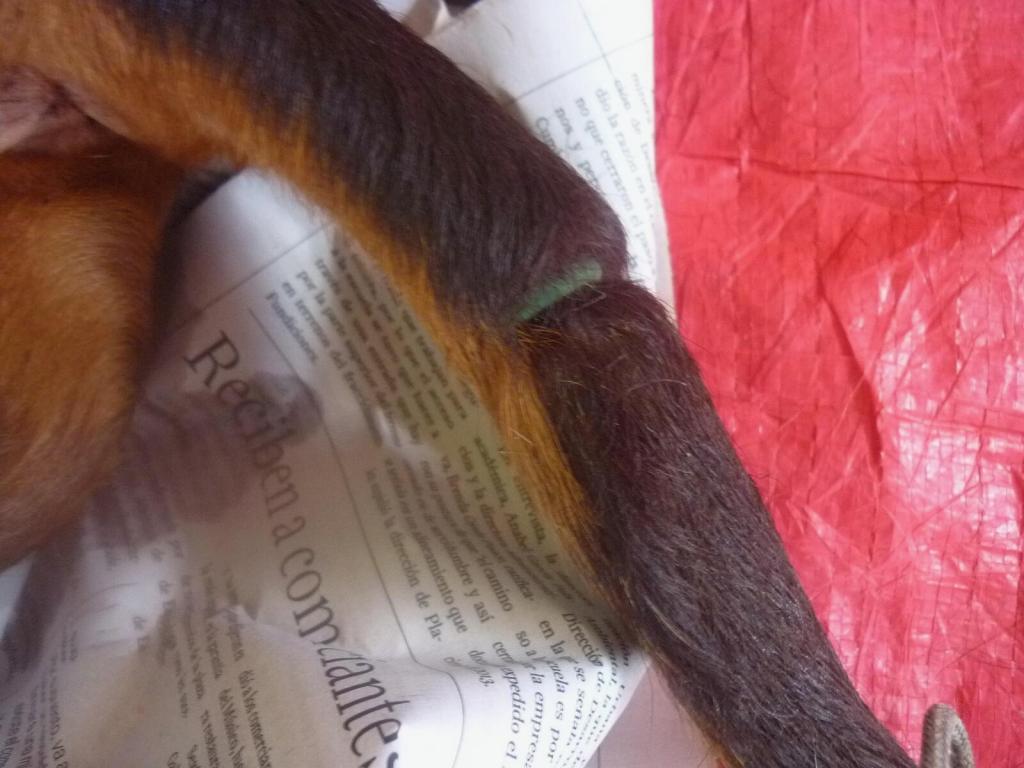During a sterilization campaign in a rural area, we noticed something strange about an adult female Doberman when she was brought into the recovery area. A hard rubber ring around her tail was cutting into the flesh.
A resident of the village who had helped organize the campaign recognized the ring as the type used by farmers to dock lambs’ tails and to castrate sheep and horses. The ring cuts off the blood supply to the end of the tail or the testes, eventually causing the affected area to wither and fall off. It seemed the owner of the dog we were looking at wanted the dog’s tail to be cropped and had chosen this method to achieve that end.

While the dog was still unconscious, we removed the ring. When she woke up and was ready to go home, one of the veterinarians spoke with her owner, explaining to him that putting such a device on her tail was causing immeasurable pain and could lead to an infection that would threaten her life. The man said he had been given the dog only a few days before the campaign and was unaware of the ring, which had been put on the dog by her previous owner.
Ear-cropping (otoplasty) and tail-docking for cosmetic purposes are now banned in most countries belonging to the International Federation of Kennel Clubs. The American Veterinary Medical Association opposes ear cropping and tail docking of dogs done solely for cosmetic purposes and encourages the elimination of both practices from breed standards. In most U.S. states where it is permitted, it must be done by a licensed veterinarian while the animal is anesthetized, and many veterinarians refuse to perform the procedure for cosmetic purposes. Unfortunately, it is still common here to see pit bulls, Dobermans, Schnauzers, and Boxers with cropped ears, docked tails, or both mutilations.
Ear-cropping and tail-docking for cosmetic purposes
are now banned in most countries belonging to the
International Federation of Kennel Clubs.
Guanajuato’s state law for the protection of domestic animals, revised in 2015, states that “any alteration of the physical integrity or negative modification of the natural instincts [of animals] … that is not effected with justifiable cause and under the care of a specialist or person duly authorized and having technical knowledge“ is considered to be an act of cruelty and mistreatment (Article 23, paragraph I).
The law does not define “justifiable cause” or state whether ear-cropping or tail-docking for cosmetic purposes is justifiable. The only restriction appears to be that they be performed by a licensed veterinarian. Because they are a form of mutilation and cause severe pain, Amigos de los Animales opposes their practice and urges the state and federal governments to ban them outright.
